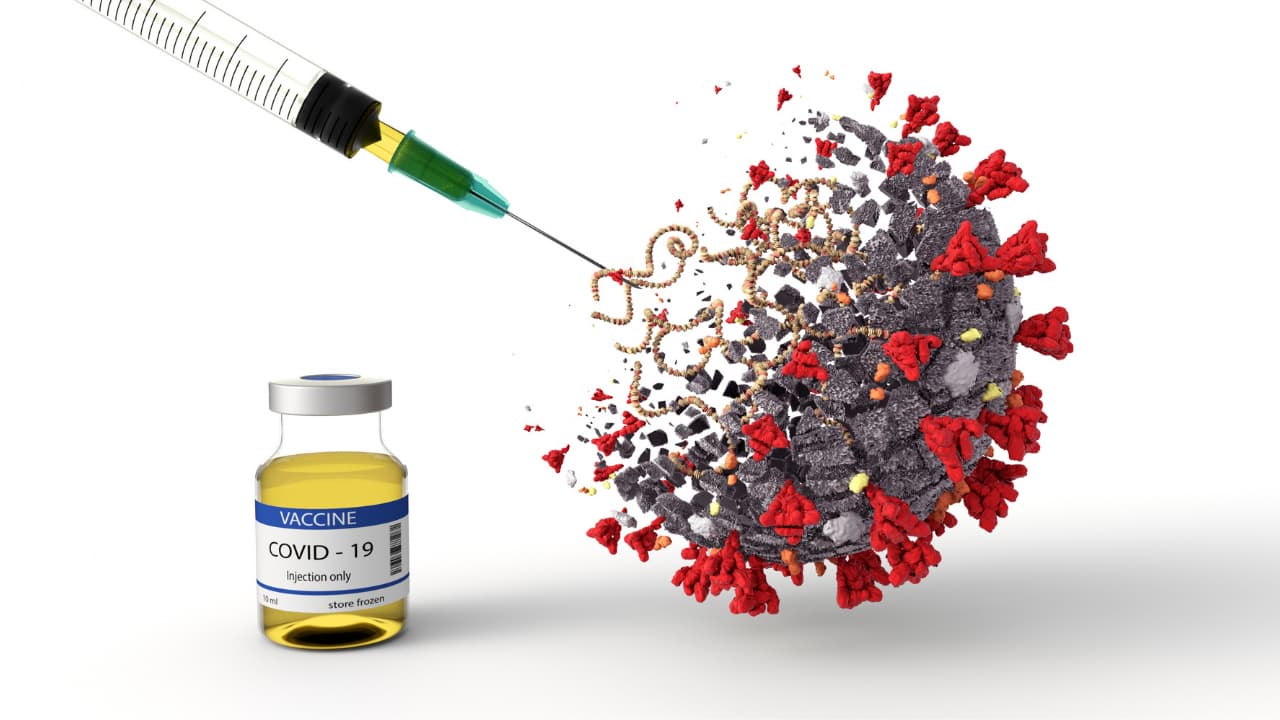

All vaccines work by exposing the body to molecules from the pathogenic organism , to trigger an immune response but the method of exposure varies.
At a glance:
Viral vector-based vaccines differ from most conventional vaccines in that they don’t actually contain antigens, but rather use the body’s own cells to produce them. They do this by using a modified virus (the vector) to deliver a genetic code for antigen. For COVID-19 , the antigen would be the spike proteins found on the surface of the virus. . By infecting human cells and instructing them to make large amounts of antigen, an immune response is triggered . In short , the vaccine mimics what happens during natural infection with certain pathogens – especially viruses. This has the advantage of triggering a strong cellular immune response by T cells as well the production of antibodies by B cells .
• Well-established technology
• Strong immune response
• Immune response involves B cells and T cells
• Previous exposure to the vector could reduce effectiveness
• Relatively complex to manufacture
Viruses survive and replicate by invading their host’s cells and hijacking their protein-making machinery, so it reads the virus’ genetic code and makes new viruses. These virus particles contain antigens, molecules that can trigger an immune response. A similar principle underpins viral vector vaccines – only in this case, the host cells only receive code to make antigens. The viral vector acts as a delivery system, providing a means to invade the cell and insert the code for a different virus’ antigens (the pathogen you’re trying to vaccinate against). The virus itself is harmless, and by getting the cells only to produce antigens the body can mount an immune response safely, without developing disease.
Various viruses have been developed as vectors, including adenovirus (a cause of the common cold), measles virus and vaccinia virus. These vectors are stripped of any disease-causing genes and even the genes that can enable them to replicate in the body , meaning they are now harmless. The genetic instructions for making the antigen from the target microbe that the vaccine is being developed against , are stitched into the virus vector’s genome.
There are two main types of viral vector-based vaccines. Non-replicating vector vaccines are unable to make new viral particles; they only produce the vaccine antigen. Replicating vector vaccines also produce new viral particles in the cells they infect, which then go on to infect new cells that will also make the vaccine antigen. The COVID-19 viral vector vaccines under development use non-replicating viral vectors.
Once injected into the body, these vaccine viruses begin infecting our cells and inserting their genetic material – including the antigen gene – into the cells’ nuclei. Human cells manufacture the antigen as if it were one of their own proteins and this is presented on their surface alongside many other proteins. When the immune cells detect the foreign antigen, they mount an immune response against it.
This response includes antibody-producing B cells, as well as T cells, which seek out and destroy infected cells.
One challenge of this approach is that people may previously have been exposed to the virus vector and raise an immune response against it, reducing the effectiveness of the vaccine. Such “anti-vector immunity” also makes delivering a second dose of the vaccine challenging, assuming this is needed, unless this second dose is delivered using a different virus vector.
Two of the COVID -19 vaccines (from Johnson & Johnson/Janssen Pharmaceuticals and AstraZeneca/University of Oxford) use something called an adenovirus as the vector . Each company kind of develops its own system, but the rationale is the same: Find a virus that not a lot of people have been exposed to before. By using a monkey adenovirus, a human won’t have been exposed to it. In humans, there are a lot of different types of adenoviruses, some a lot more common than others. The vaccine is likely made from a rare one. If you use a common virus, there’s always a chance someone will have been infected naturally and their immune system will attack the vaccine before it can work.
The Russian Sputnik V vaccine starts with a shot of Ad26 vector followed by a booster with Ad5, both of which carry the gene for the spike protein of SARS-CoV-2. This circumvents a downside of viral vector vaccines, specifically, once you give the first shot, subsequent injections will be less efficacious because of antibodies against the vector.
A major bottleneck for viral vector vaccine production is scalability. Traditionally, viral vectors are grown in cells that are attached to a substrate, rather than in free-floating cells – but this is difficult to do on a large scale. Suspension cell lines are now being developed, which would enable viral vectors to be grown in large bioreactors.
Assembling the vector vaccine is also a complex process, involving multiple steps and components, each of which increases the risk of contamination. Extensive testing is therefore required after every step, increasing costs.
Viral vector-based technology has been used to develop many vaccines for animals. It’s also an emerging technology for use in human vaccines, including an Ebola vaccine, which has been approved by a number of international regulators. There’s always a lot of attention paid to safety when a vaccine is developed.
Call 1860-500-1066 to book an appointment.
If Emergency Call : 1066
Read More:
Almost 30% of Patients Discharged After COVID-19 Treatment Need Re-admission
Apollo ReCOVer Clinics For Patients with Lingering Post-COVID Illness
The content is verified and reviewd by experienced practicing Pulmonologist to ensure that the information provided is current, accurate and above all, patient-focused

August 26, 2023